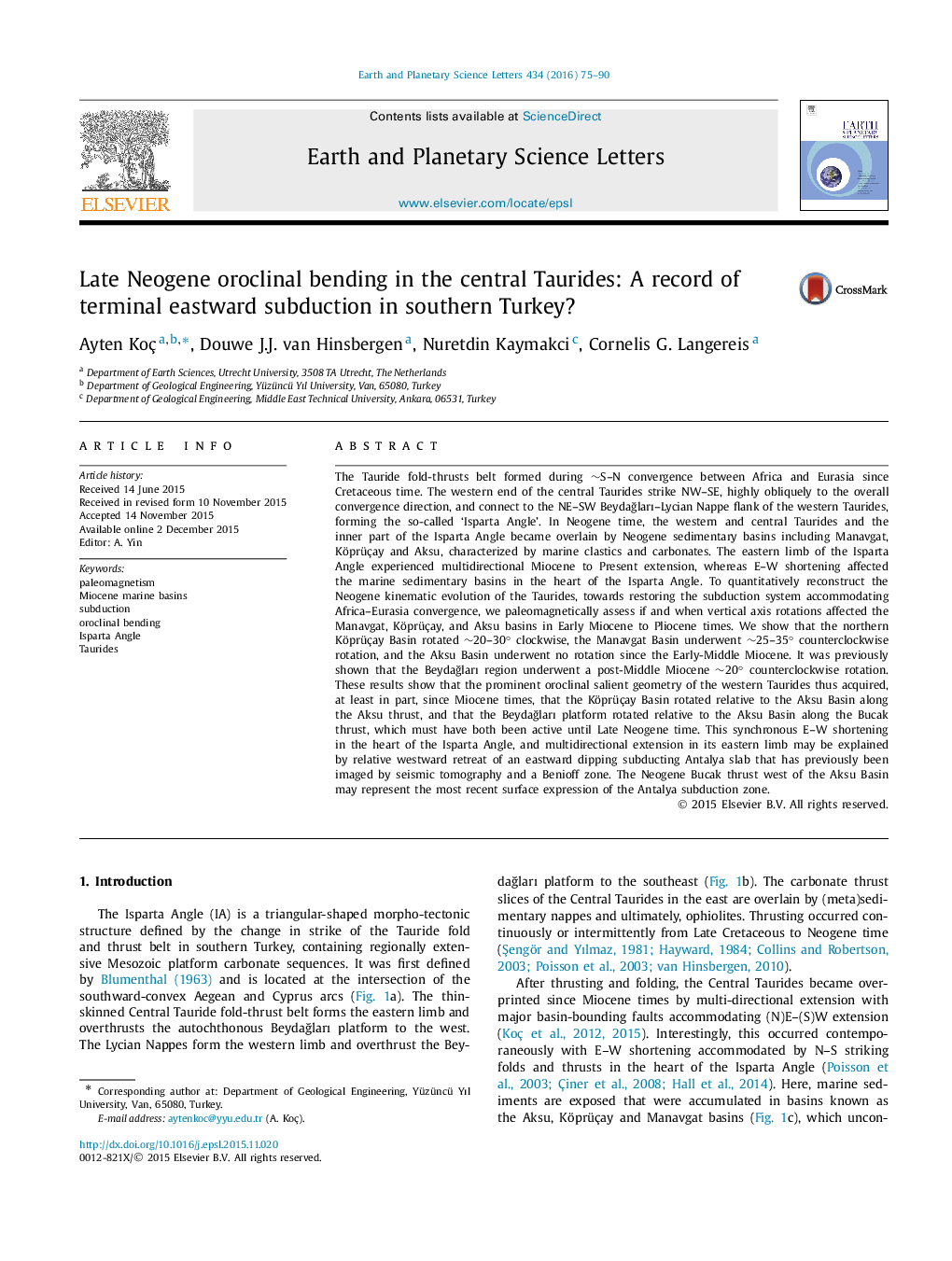| Article ID | Journal | Published Year | Pages | File Type |
|---|---|---|---|---|
| 6427727 | Earth and Planetary Science Letters | 2016 | 16 Pages |
â¢We identify three different rotational domains in the center of the Isparta Angle.â¢The rotational domains show oroclinal bending in the east of the Central Taurides.â¢Oroclinal bending is related to complex subduction configuration of SW Turkey within the Isparta Angle.â¢We propose westward retreat of the Antalya slab until Pliocene.
The Tauride fold-thrusts belt formed during â¼S-N convergence between Africa and Eurasia since Cretaceous time. The western end of the central Taurides strike NW-SE, highly obliquely to the overall convergence direction, and connect to the NE-SW BeydaÄları-Lycian Nappe flank of the western Taurides, forming the so-called 'Isparta Angle'. In Neogene time, the western and central Taurides and the inner part of the Isparta Angle became overlain by Neogene sedimentary basins including Manavgat, Köprüçay and Aksu, characterized by marine clastics and carbonates. The eastern limb of the Isparta Angle experienced multidirectional Miocene to Present extension, whereas E-W shortening affected the marine sedimentary basins in the heart of the Isparta Angle. To quantitatively reconstruct the Neogene kinematic evolution of the Taurides, towards restoring the subduction system accommodating Africa-Eurasia convergence, we paleomagnetically assess if and when vertical axis rotations affected the Manavgat, Köprüçay, and Aksu basins in Early Miocene to Pliocene times. We show that the northern Köprüçay Basin rotated â¼20-30° clockwise, the Manavgat Basin underwent â¼25-35° counterclockwise rotation, and the Aksu Basin underwent no rotation since the Early-Middle Miocene. It was previously shown that the BeydaÄları region underwent a post-Middle Miocene â¼20° counterclockwise rotation. These results show that the prominent oroclinal salient geometry of the western Taurides thus acquired, at least in part, since Miocene times, that the Köprüçay Basin rotated relative to the Aksu Basin along the Aksu thrust, and that the BeydaÄları platform rotated relative to the Aksu Basin along the Bucak thrust, which must have both been active until Late Neogene time. This synchronous E-W shortening in the heart of the Isparta Angle, and multidirectional extension in its eastern limb may be explained by relative westward retreat of an eastward dipping subducting Antalya slab that has previously been imaged by seismic tomography and a Benioff zone. The Neogene Bucak thrust west of the Aksu Basin may represent the most recent surface expression of the Antalya subduction zone.
